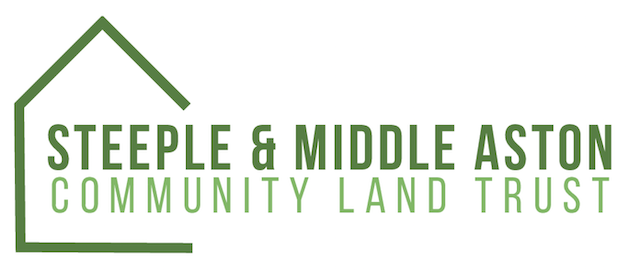Members’ meeting 29th January 2025: the meeting opened with a presentation – click here to view it.
HOUSING: The CLT is already approaching local land owners of the potential development sites around the villages to discuss if, and how, the CLT may be able to take forward possible housing schemes. These discussions are at a preliminary stage and members will be told if and when anything develops from this.
A number of points arose from the presentation and from questions, including the following. The CLT will conduct further work on answering some of these, but short answers are given below:
Housing tenure
What types of tenure are available for CLTs?
- For affordable housing, the CLT can deliver a range of tenure types- rental, shared ownership, co-ownership, and discounted sales; in addition homes for sale at market prices can form a proportion of what is built, to help subsidise the affordable homes.
Local connection
Keeping affordable homes available for local people in perpetuity – how can this be achieved in practice? Could an occupier give or bequeath a CLT home to a family member who did not live in the village?
- The CLT will negotiate the rules for eligibility of tenants with Cherwell’s Housing Department. The definition of ‘local connection’ depends on these rules. The starting point for the negotiations is Cherwell’s own rules, which state:
Priority will be given to applicants who are in housing need and:
- have lived in the village for the last five years or
- are employed in the village for a minimum of sixteen hours per week and the employment is not of a short-term nature or
- have ten years previous residence in the village if not currently residing there or
- are over 55 or with a disability requiring support on health grounds from close relatives currently living in the village or
- have close relatives (as defined in the rules) living in the village for a period of at least the last five years.
Households which own their own home do not ordinarily meet the qualifying criteria for affordable housing.
CLTs may be permitted some discretion over application of the agreed rules. They can also exercise control over who can purchase market homes, through application of their own guidelines.
Finance for affordable housing
In the absence at the moment of a Government-backed Community Housing Fund, most CLTs raise finance for their projects by entering into loans and community share offers. The loans are repaid from rental income and from sale of market homes where these form part of the project.
Some other points raised:
- Single storey dwellings for the elderly and starter homes for the young need not be at each other’s expense. They should be able to co-exist in a project.
- If houses had few bedrooms the idea of communal spare bedrooms was sensible
- Houses should be built to encourage social cohesion by facing into a courtyard
- Large extensions should be prohibited to prevent small houses becoming large houses
These and the 30 or so other points raised are being assembled to help form a brief for the CLT’s first housing project(s), which we will publish on this website.
WIDER ISSUES
The meeting also generated nearly 50 ideas widening the scope as part of a vision for the future of the two parishes. Many of these fitted various themes:
- Community hub for health and other provision
- Community-based power generation
- Improved and new footpath routes
- Better use of land to include food-growing and woodland
- Better public transport and less car use
The full list can be viewed here.
